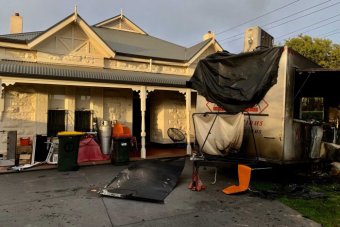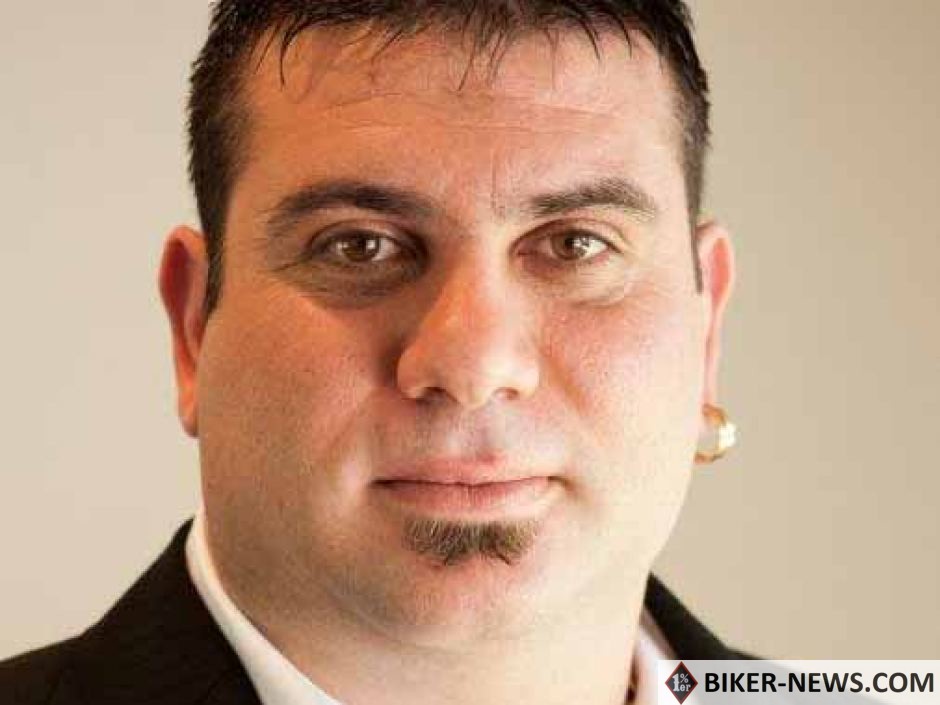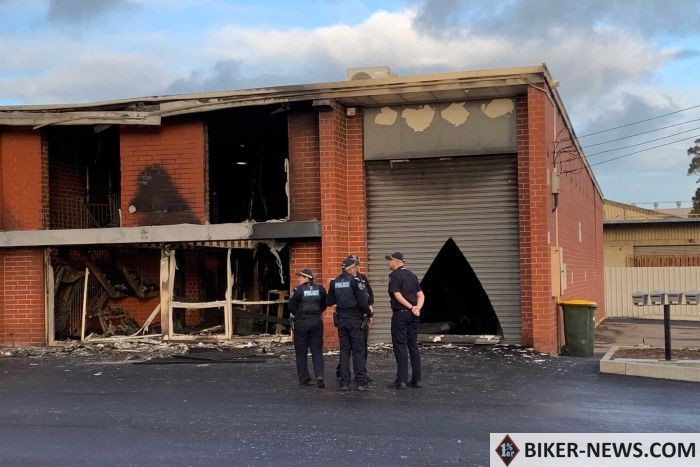Despite fears of an escalating bikie war in Adelaide, outlaw motorcycle clubs account for only a fraction of criminal activity that costs Australia up to $47.4 billion annually, a criminologist has said.
Key points:
- Tit-for tat arson and shooting attacks have rattled Adelaide
- Bikie contribution to estimated costs of crime is believed to be marginal
- Queensland bikies accounted for just 1 per cent of reported crime
Police have linked a hair salon fire on Wednesday morning to the firing of bullets at an Ascot Park house on Monday, a suspicious fire at a Marleston gymnasium last Friday, and a suspected arson attack on a food van outside a Mile End home the previous morning.
They suggest it is related to drug debt, and potential power shifts within the Hells Angels Motorcycle Club.
But despite the dangerous incidents, former police detective and Bond University criminology associate professor, Terry Goldsworthy, said his study crunched the data on bikies over a six-year period in Queensland and showed they accounted for less than 1 per cent of the state’s reported crime.
“We also found they accounted for less than 1 per cent of organised crime offences such as trafficking, murder, robberies — those type of offences,” he said.
“They conduct some very dangerous activities and there’s no denying that a percentage of bikies are quite dangerous and engage in very violent and high-level organised crime.
“But the majority are not in that category and they’re cellar dwellers when it comes to criminal activity.”

Bikies are ‘small players’ economically
Professor Goldworthy’s report examined the legal and investigative ramifications of anti-bikie laws in Queensland — a version of which has been adopted in other jurisdictions like South Australia — which declared specific organisations to be criminal and imposed restrictions on consorting and wearing club colours publicly.
According to an Australian Crime Commission report from 2013–14, the cost of serious and organised crime to the Australian economy that year was $36 billion.
It found that some 70 per cent of criminal threats were based offshore or had strong offshore links.
Professor Goldsworthy found that while bikies were involved in the drug trade and crime, they were not dominant players and state governments were at risk of dropping the ball on other criminal entrepreneurs and freelancers by focussing disproportionately on bikies.
“We were seeing figures of $1 million or $2 million being recovered by bikies in a 12-month period [in Queensland],” Professor Goldsworthy said.
“It’s quite low, but of course there’s also the unknowns, the money that’s not recaptured and forfeited to the Crown.”
The Australian Institute of Criminology estimates the costs of serious and organised crime reached somewhere between $23.8 billion and $47.4 billion during 2016–17.
Tit-for-tat attacks ‘demonstrative’
The recent spate of arson attacks and the house shooting in Adelaide came just weeks after five men and one women were arrested over the shooting death of Jason De Ieso at Pooraka in 2012.
They have been charged over the alleged murder that took place in his panel beating business.

Police said several of the suspects were linked to the Hells Angels and hoped to arrest three additional men.
They did not believe the more recent arson and shooting incidents were “directly related” to Mr De Ieso’s death, but believed the arrests may have shifted relationships within the club.
Police have also talked down concerns about a bikie war and believe the drug debt dispute is contained to the Hells Angels and their associates and did not involve other outlaw motorcycle clubs.
Queensland University of Technology’s School of Justice associate professor, Mark Lauchs, said the incidents of the past week appeared to be “tit for tat expressive violence”.
“It’s demonstrative, as opposed to something very exacting and instrumental, which tends to indicate some form of organised crime or a major drug debt,” Dr Lauchs said.
He said the brazen acts were typical of modern bikies while in the past such feuds were more likely to be kept out of the public eye.
“A code of silence still applies on both sides,” Dr Lauchs said.
“As far as the clubs are concerned, it’s no-one else’s business. We’re complete outsiders and just don’t need to know.”
Source: ABC
